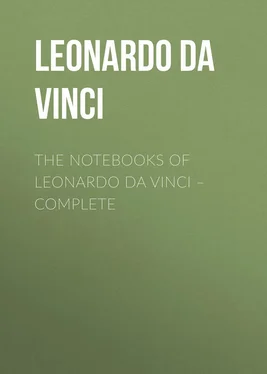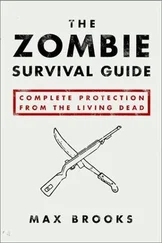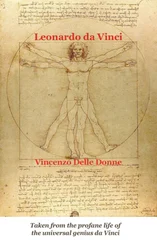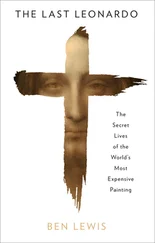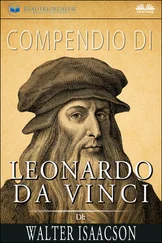Leonardo da Vinci - The Notebooks of Leonardo Da Vinci. Complete
Здесь есть возможность читать онлайн «Leonardo da Vinci - The Notebooks of Leonardo Da Vinci. Complete» — ознакомительный отрывок электронной книги совершенно бесплатно, а после прочтения отрывка купить полную версию. В некоторых случаях можно слушать аудио, скачать через торрент в формате fb2 и присутствует краткое содержание. Жанр: foreign_prose, foreign_home, visual_arts, foreign_antique, на английском языке. Описание произведения, (предисловие) а так же отзывы посетителей доступны на портале библиотеки ЛибКат.
- Название:The Notebooks of Leonardo Da Vinci. Complete
- Автор:
- Жанр:
- Год:неизвестен
- ISBN:нет данных
- Рейтинг книги:3 / 5. Голосов: 1
-
Избранное:Добавить в избранное
- Отзывы:
-
Ваша оценка:
- 60
- 1
- 2
- 3
- 4
- 5
The Notebooks of Leonardo Da Vinci. Complete: краткое содержание, описание и аннотация
Предлагаем к чтению аннотацию, описание, краткое содержание или предисловие (зависит от того, что написал сам автор книги «The Notebooks of Leonardo Da Vinci. Complete»). Если вы не нашли необходимую информацию о книге — напишите в комментариях, мы постараемся отыскать её.
The Notebooks of Leonardo Da Vinci. Complete — читать онлайн ознакомительный отрывок
Ниже представлен текст книги, разбитый по страницам. Система сохранения места последней прочитанной страницы, позволяет с удобством читать онлайн бесплатно книгу «The Notebooks of Leonardo Da Vinci. Complete», без необходимости каждый раз заново искать на чём Вы остановились. Поставьте закладку, и сможете в любой момент перейти на страницу, на которой закончили чтение.
Интервал:
Закладка:
[Footnote: See Pl. XVIII. The original leaf is 21 centimetres wide and 33 1/2 long. At the ends of the scale below the figure are written the words diti (fingers) and palmi (palms). The passage quoted from Vitruvius is Book III, Cap. 1, and Leonardo's drawing is given in the editions of Vitruvius by FRA GIOCONDO (Venezia 1511, fol., Firenze 1513, 8vo.) and by CESARIANO (Como 1521).]
The arm and head.
344
From b to a is one head, as well as from c to a and this happens when the elbow forms a right angle.
[Footnote: See Pl. XLI, No. 1.]
Proportions of the arm (345-349).
345
From the tip of the longest finger of the hand to the shoulder joint is four hands or, if you will, four faces.
a b c are equal and each interval is 2 heads.
[Footnote: Lines 1-3 are given on Pl. XV below the front view of the leg; lines 4 and 5 are below again, on the left side. The lettering refers to the bent arm near the text.]
346
The hand from the longest finger to the wrist joint goes 4 times from the tip of the longest finger to the shoulder joint.
347
a b c are equal to each other and to the foot and to the space between the nipple and the navel d e will be the third part of the whole man.
f g is the fourth part of a man and is equal to g h and measures a cubit.
[Footnote: See Pl. XIX, No. 1. 1. mamolino (= bambino , little child) may mean here the navel.]
348
a b goes 4 times into a c and 9 into a m . The greatest thickness of the arm between the elbow and the hand goes 6 times into a m and is equal to r f . The greatest thickness of the arm between the shoulder and the elbow goes 4 times into c m , and is equal to h n g . The smallest thickness of the arm above the elbow x y is not the base of a square, but is equal to half the space h 3 which is found between the inner joint of the arm and the wrist joint.
[11]The width of the wrist goes 12 times into the whole arm; that is from the tip of the fingers to the shoulder joint; that is 3 times into the hand and 9 into the arm.
The arm when bent is 4 heads.
The arm from the shoulder to the elbow in bending increases in length, that is in the length from the shoulder to the elbow, and this increase is equal to the thickness of the arm at the wrist when seen in profile. And the space between the bottom of the chin and the parting of the lips, is equal to the thickness of the 2 middle fingers, and to the width of the mouth and to the space between the roots of the hair on the forehead and the top of the head [Footnote: Queste cose . This passage seems to have been written on purpose to rectify the foregoing lines. The error is explained by the accompanying sketch of the bones of the arm.]. All these distances are equal to each other, but they are not equal to the above-mentioned increase in the arm.
The arm between the elbow and wrist never increases by being bent or extended.
The arm, from the shoulder to the inner joint when extended.
When the arm is extended, p n is equal to n a . And when it is bent n a diminishes 1/6 of its length and p n does the same. The outer elbow joint increases 1/7 when bent; and thus by being bent it increases to the length of 2 heads. And on the inner side, by bending, it is found that whereas the arm from where it joins the side to the wrist, was 2 heads and a half, in bending it loses the half head and measures only two: one from the [shoulder] joint to the end [by the elbow], and the other to the hand.
The arm when folded will measure 2 faces up to the shoulder from the elbow and 2 from the elbow to the insertion of the four fingers on the palm of the hand. The length from the base of the fingers to the elbow never alters in any position of the arm.
If the arm is extended it decreases by 1/3 of the length between b and h ; and if—being extended—it is bent, it will increase the half of o e . [Footnote 59-61: The figure sketched in the margin is however drawn to different proportions.] The length from the shoulder to the elbow is the same as from the base of the thumb, inside, to the elbow a b c .
[Footnote 62-64: The arm sketch on the margin of the MS. is identically the same as that given below on Pl. XX which may therefore be referred to in this place. In line 62 we read therefore z c for m n .] The smallest thickness of the arm in profile z c goes 6 times between the knuckles of the hand and the dimple of the elbow when extended and 14 times in the whole arm and 42 in the whole man [64]. The greatest thickness of the arm in profile is equal to the greatest thickness of the arm in front; but the first is placed at a third of the arm from the shoulder joint to the elbow and the other at a third from the elbow towards the hand.
[Footnote: Compare Pl. XVII. Lines 1-10 and 11-15 are written in two columns below the extended arm, and at the tips of the fingers we find the words: fine d'unghie (ends of the nails). Part of the text—lines 22 to 25—is visible by the side of the sketches on Pl. XXXV, No. 1.]
349
From the top of the shoulder to the point of the elbow is as far as from that point to the joints of the four fingers with the palm of the hand, and each is 2 faces.
[5] a e is equal to the palm of the hand, r f and o g are equal to half a head and each goes 4 times into a b and b c . From c to m is 1/2 a head; m n is 1/3 of a head and goes 6 times into c b and into b a ; a b loses 1/7 of its length when the arm is extended; c b never alters; o will always be the middle point between a and s .
y l is the fleshy part of the arm and measures one head; and when the arm is bent this shrinks 2/5 of its length; o a in bending loses 1/6 and so does o r .
a b is 1/7 of r c . f s will be 1/8 of r c , and each of those 2 measurements is the largest of the arm; k h is the thinnest part between the shoulder and the elbow and it is 1/8 of the whole arm r c ; o p is 1/5 of r l ; c z goes 13 times into r c .
[Footnote: See Pl. XX where the text is also seen from lines 5-23.]
The movement of the arm (350-354).
350
In the innermost bend of the joints of every limb the reliefs are converted into a hollow, and likewise every hollow of the innermost bends becomes a convexity when the limb is straightened to the utmost. And in this very great mistakes are often made by those who have insufficient knowledge and trust to their own invention and do not have recourse to the imitation of nature; and these variations occur more in the middle of the sides than in front, and more at the back than at the sides.
351
When the arm is bent at an angle at the elbow, it will produce some angle; the more acute the angle is, the more will the muscles within the bend be shortened; while the muscles outside will become of greater length than before. As is shown in the example; d c e will shrink considerably; and b n will be much extended.
[Footnote: See Pl. XIX, No. 2.]
352
OF PAINTING.
The arm, as it turns, thrusts back its shoulder towards the middle of the back.
Читать дальшеИнтервал:
Закладка:
Похожие книги на «The Notebooks of Leonardo Da Vinci. Complete»
Представляем Вашему вниманию похожие книги на «The Notebooks of Leonardo Da Vinci. Complete» списком для выбора. Мы отобрали схожую по названию и смыслу литературу в надежде предоставить читателям больше вариантов отыскать новые, интересные, ещё непрочитанные произведения.
Обсуждение, отзывы о книге «The Notebooks of Leonardo Da Vinci. Complete» и просто собственные мнения читателей. Оставьте ваши комментарии, напишите, что Вы думаете о произведении, его смысле или главных героях. Укажите что конкретно понравилось, а что нет, и почему Вы так считаете.
